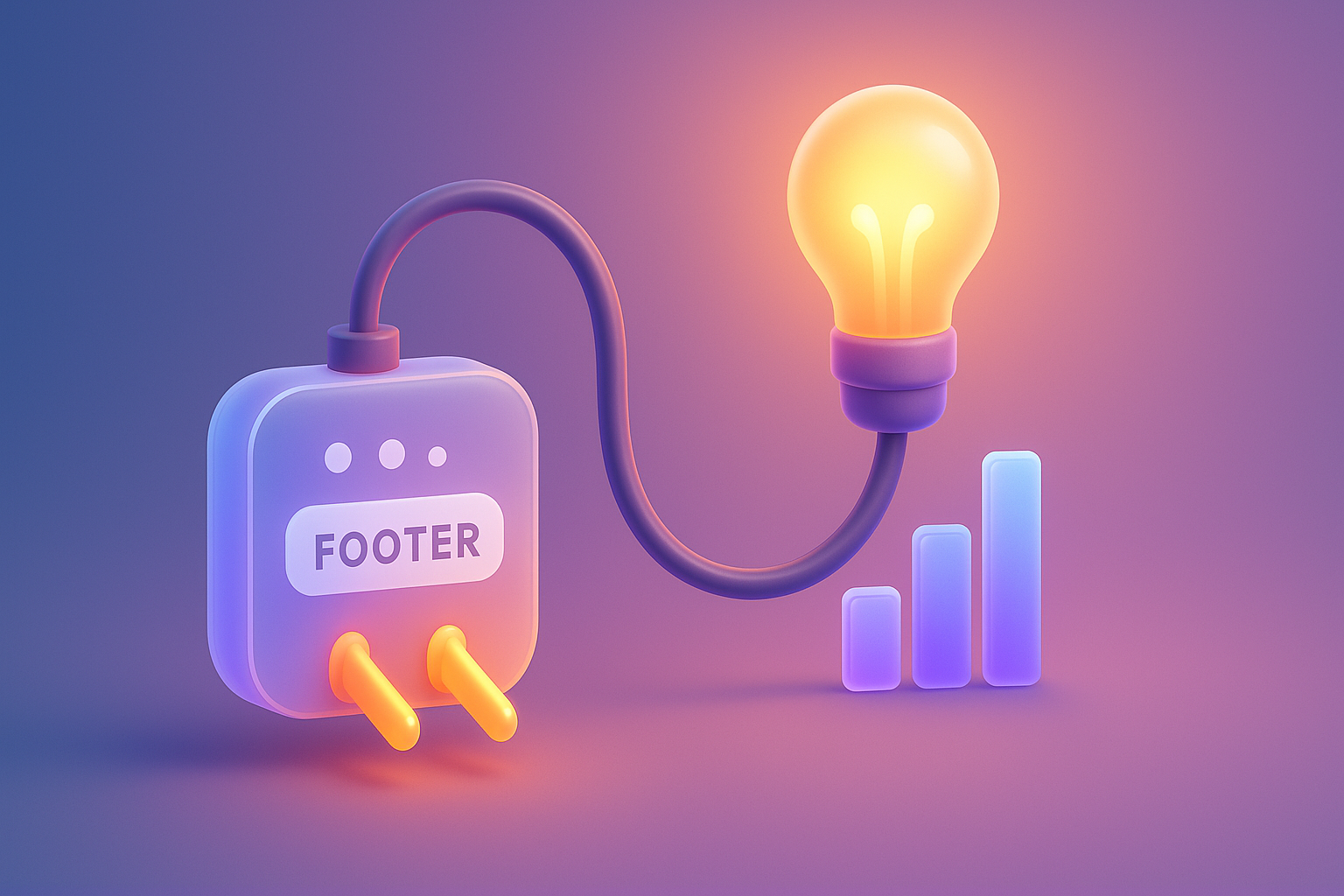TOTAL COST OF OWNERSHIP (TO): Calculate the hidden costs of Shopify vs Woommerce.

The real problem in life: "Choose the wrong platform ... like the first button."
Many online business owners Especially newbies Usually starting with the question, "Shopify and WooCommerce, which one is cheaper?" And often ends at WooCommerce "free". Shopify "monthly fee" and then decide immediately ... just to meet "nightmares" in the next 6 months.
Have you ever encountered this problem? The website is starting to slow, must buy more plugins, not stop, encounter a technical problem that cannot be solved by yourself until having to hire expensive programs. Or worse is Credit card fees and hidden expenses Began to escalate until the budget that was laid down Finally, it turns out that the thing that thinks "free" is incredibly "more expensive". This is a classic problem that is caused by just looking. "Sticker" (Sticker "but not looking at the overall picture of "The total cost of ownership" or Total Cost of Ownership (TO)
Prompt for illustrations: The business owner is sitting in the temples in front of the computer. One side of the screen is a WooCommerce logo with many plug -in icons and question markers. The other side is a Shopify logo with a price tag. Conveys confusion in choosing and invisible expenses
Why does that problem occur: the trap of the word "free" and an invisible cost
This problem arises because the nature of humans is usually attracted by the word "free" or "cheap". WooCommerce, an open-source and free download. Therefore seems to be a very interesting option at first But what most people overlook is the "hidden costs" that are hidden in real use. Which is like an iceberg That we only see its top
These invisible costs consist of:
- Hosting: WooCommerce must have a good and fast hosting, which has monthly/annual cost. And will be more expensive when your website traffic is higher
- Pro level of pro level: free Theme may have a lot of limitations. Finally, I have to pay to buy beautiful themes and complete functions.
- Apps/plugins: important functions such as member systems, booking, or automatic marketing All have to use the plug -in that most of them have to "buy" more, and the more down the website is slower.
- Care and maintenance (Maintenance): You have to keep updating the system, plugin, and take care of your own safety. Or hire someone to take care Which is the cost of "time" and "money" that many people forget about
- Development and customization (Development): If wanting a specialized function You have to hire developers to write more code. Which has a very high cost
- Credit card fees: Although WooCommerce is not charged, every Payment Gateway has their own fees.
On the other hand, Shopify that looks like "expensive" because there is a monthly service fee, including hosting, safety, and basic care. Causing most costs "Prediction" is easier than choosing without considering these elements. Therefore no different from buying a car by just looking at the price But forgot to think about fuel costs, insurance and maintenance fees in the long run Understanding the overview of Website costs Therefore is very important
Prompt for illustrations: Infovic images of iceberg The top says "Price of platform (free!)" The part that is submerged with various signs such as "hosting", "plug -in", "system care fee", "developer wage", "Loss time"
If left, how will it affect ?: From "saving" become "malicious" per budget.
Ignoring the calculation of TO and selecting the platform by just looking at the starting price May lead to more serious effects than expected Especially with a growing business:
- The budget escalates. Not existing: unexpected expenses from the plugin, freelance wages, or hosting values that need to be upgraded to gradually bite your profits little by little. Causing the company to stumble
- Loss of growth opportunities: instead of spending time and resources with marketing, product development, or customer care You have to waste time solving technical problems, finding a plug -in, or sitting on the web from falling.
- Poor customer experience: Slow websites, frequent problems, or complex payment procedures because the plugin works incomplete. Will make customers become frustrated and pressed out of the web in the end, resulting in a direct conversion rate directly
- Safety problems: Safety care on WooCommerce is 100% of your responsibility if the update is slow or inaccurate. May be at risk of being hacked Which causes enormous damage to reputation and property
- Technical debt: choosing a cheap plug -in or continuing to solve problems May make the web structure in long -term and difficult to fix To the point of having to "remove all new", which has many times higher than the right choice As seen in many ways In the case of having to decide to move from WooCommerce to Shopify later
In the end, these "hidden costs" will become "sink costs" that hold your business from going forward as it should be.
Prompt for illustrations: The graph of the project shows the budget (Projectmed Cost) is a straight line, but the actual cost is a gradual line. Rising too high With small icons such as viruses, wheelchair, and hourglass
Is there any solution? And where should it start: Get to know "TCO".
The best solution is to change the view from asking "Which one is cheaper?" To ask, "TO is more worth our business in the long run?" The TOCO or TOTAL COST OF OWNERSHIP is the idea of evaluating all costs related to the ownership of that asset. Throughout the service life Not just the first purchase price According to the definition of Gartner: Total Cost of Ownership (TO)
To compare the TO between Shopify and WooCommerce, we must enumerate the cost into various categories:
1. Basic Platform Cost
- Shopify: Clear monthly fees (such as basic, shopify, Advanced), which is easy to predict.
- WooCommerce: Free (Software), but must have a cost for Domain Name and Web Hosting that are good enough (starting at hundreds to thousands of baht per month).
2. Design cost (Theme/Design Costs)
- Shopify: There is a free Theme to choose from or buy a pro level at a single paid price (about 2,000 - 12,000 baht).
- WooCommerce: There is a free Theme as well, but the popular pro -level Theme is often similar to Shopify.
3. Functional costs (Apps/Plugins Costs)
- Shopify: There is a large App Store. Most apps are monthly application form. (Subscription) can control the budget But may be combined into a large sum of money
- WooCommerce: There are a lot of plugins to choose from. There are both free, paying once, and annual, but many selection The developers can cause compatibility (Conflict).
4. Transaction Fees
- Shopify: If using Shopify Payments, there will be no additional platform fees. (There is only a normal credit card fee) but if using the external Payment Gateway, there will be an additional 0.5% - 2% additional fee.
- WooCommerce: No platform fee You will only pay the Payment Gateway fees that you choose (such as Stripe, Omise).
5. Maintenance & Time Costs
- Shopify: Shopify to take care of all (hosting, safety, update). You have time to focus on selling.
- WooCommerce: You must be all responsible. Including updates, backup, and virus scanning. This is a "time cost" that is difficult to assess. But exists
The beginning of this Framework will help you see the real overview. And decided more intelligent Similar to the comparison of the TCO of Webflow and WordPress with similar dynamic
Prompt for illustrations: Simple shopify vs woocommer comparison table, divided into rows according to the cost (Platform, Theme, Apps, Fees, Maintenance) and columns for each platform. With icons in each channel
Example from the real thing that used to be successful: the story of "Roasted Coffee Shop" with "Fashion clothing store"
In order to see the image clearer Take a look at the fictional story of these 2 stores.
Case 1: Roasted Coffee "Beanthere" choose WooCommerce because "free"
- Starting problem: Khun A, the owner of Beanthere, wants a simple e-commerce website to sell online coffee beans. He saw that WoCommerce decided to choose to "save" at first. He only paid 500 baht per month and use the theme.
- Followed crisis: when the business grows He wants to add a subscription box (coffee delivery every month), so I have to buy a plug -in price of 6,000 baht per year. Have to buy another price of 4,500 baht. The website starts to slower because the plug -in is too much to upgrade the hosting 2,000 baht per month and one day the website crashes during the flash sale because of the plug -in and hit together. Causing him to pay another 8,000 baht emergency developer to recover the website
- Summary: One year passed, "free" of Khun A became a cost that is not predicted and is much higher than expected. While also wasting time and the opportunity to sell unfortunately
Case 2: The "Styleup" clothing store selects Shopify by calculating TO
- Planning: Mr. B, the owner of the Styleup store, studied the information and found that although Shopify has a monthly fee starting at approximately 1,300 baht, but has included high quality hosting and safety. She estimates that the app for Loyalty Program (1,500 baht per month) and apps for product reviews (500 baht per month)
- Expected results: her monthly cost is approximately 3,300 baht, which is a clear number and a budget plan. When there is a big promotion, the traffic rises to the website, it still works smoothly without worrying about upgrading hosting. She can spend all the time with the design of the new collection and marketing.
- Conclusion: Investment that looks higher than at first Instead, the "worthwhile" rewards in the long run because of fixed costs, saving time, and allowing the business to grow steadily. This is the power of viewing the TO's overall picture, as the large platform provider BigCommerce has explained.
Prompt for illustrations: Before & After style or comparison. The left side is the owner of Beanthere, which looks serious with the code and the waxing cost graph. The right side is the owner of the Smile Styleup shop and the package of the customer happily. With a constant cost graph behind
If wanting to follow, what to do? (Can be used immediately): Checklist calculated your TO in 5 steps.
Ready to calculate your own TCO? Try using this simple checklist to assess the cost of Shopify and Woocommerce for your business in the next year.
Step 1: Basic cost evaluation (annual)
- Shopify: (Monthly plan x 12) =?
- WooCommerce: (Domain + annual hosting value) =?
Step 2: Evaluation of design costs (Pay once)
- Shopify: Theme (if buying) =?
- WooCommerce: Theme (if buying) =?
Step 3: List of functions that "must have" and evaluate the cost of apps/plugin (yearly)
Example: Review System, Member System, Automatic Marketing, UPSELL/CROSS-SELL, Advanced SEO
- Shopify: (app for A + app B + app) x 12 =?
- WooCommerce: Akin A (yearly) + plugin b (yearly) =?
Step 4: Assess the cost of care and time (annual)
- Shopify: 0 baht (included in the plan)
- WooCommerce: (Monthly Wages x 12) or assess your own "time waste" if done (such as 10 hours/month x your wage) =?
Step 5: All numbers
- Shopify TCo (first year) = Article 1 + 2 + 3 + 4
- WooCommerce Tco (first year) = Article 1 + 2 + 3 + 4
When the final number has been obtained You will see more clear images in the situation of "you". Which platform is better to answer financial needs in the long run? Whether you want to develop a flexible WooCommerce or expert in the shop design This calculation is always the correct starting point.
Prompt for illustrations: Checklist or Template Inviting people to download or capture the screen to divide the 5 steps above to make it easier to fill in.
Questions that people tend to wonder And the answers that are cleared
Q1: In summary, WooCommerce isn't really free?
A: The software is free. But to make it become an online store that "Real work" and "effective" are always cost. Including hosting, themes, plugins, and most importantly, "time" in maintenance All of which are part of TO
Q2: Is Shopify's app very expensive? And it is necessary to use a lot or not?
A: There are many apps from free to several thousand baht per month. The beauty of Shopify is that you can start using a free app or an inexpensive app just a few first and then gradually add when the business grows. The cost is therefore expanding according to the size of the business (Scalable) and is easier to predict the budget than buying random plugins on WooCommerce.
Q3: If I am a newbie No techniques at all What should I choose?
A: If you want to focus on "sales" and "marketing" without worrying about the backyard technique, Shopify is a more clear answer. Because it is a closing system that takes care of almost all, while Woocommerce is highly freed, but also comes with high responsibility as well. Which may be too heavy for beginners
Q4: Is there any point that WooCommerce is worth more than Shopify?
A: Yes! WooCommerce will begin to have an advantage for businesses that are very complicated. And have their own development team (In-House Developing) that can create and look after the specific function without having to rely on external plugs Or for the country's business with Payment Gateway, which Shopify does not support, causing WooCommerce to connect directly to the local payment system.
Prompt for illustrations: People are talking. There is a question mark and the mark floating around. Conveys a clear question-answering
Summary to be easy to understand + want to try to do
Choosing a battlefield between Shopify and WooCommerce cannot be judged at "Starting price" anymore. The key is to look through ** "The total cost of ownership (TO)" ** In the long run, WooCommerce may start with the word "free" that is sweet, but it comes with hidden costs, maintenance, and plug -in that may escalate while the Shopify with monthly fees. Instead, giving peace of mind, stability, and the expected cost Allowing you to fully focus on business growth
Do not let the "hidden costs" come to hold your success. It's time to pick up the checklist above and try to calculate the TO for your own business seriously. Careful decisions today Is to invest for the sustainability of your online store in the future
If you are not sure or need experts who understand both of the platforms deeply to help plan and evaluate the TO to suit your business, especially the Vision X Brain team with advice! Regardless of which route you choose We are ready to be a partner to create a successful store for you. Contact us to start with WooCommerce or build a god shop today!
Prompt for illustrations: Powerful last picture Is a picture of a business owner standing on the junction One sign says "Shopify (the cost can be predicted)" in another way, "Woocommerce (independent and flexibility)" and there is a sign in the middle, pointing to the audience saying "Choose the right route with TOCO"
Recent Blog

Compare shocks, shock between Webflow and Framer for Startup that emphasizes the opening speed, beauty and scale ability.

Web speed is not just technical! In -depth that Core Web Vitals (LCP, Inp, CLS) affects SEO ranking, user experience And how the profit of the organization web

Don't overlook Footer! A collection of Website Footer design techniques that help improve UX, supplement SEO and change the visitors to become the Lead.






